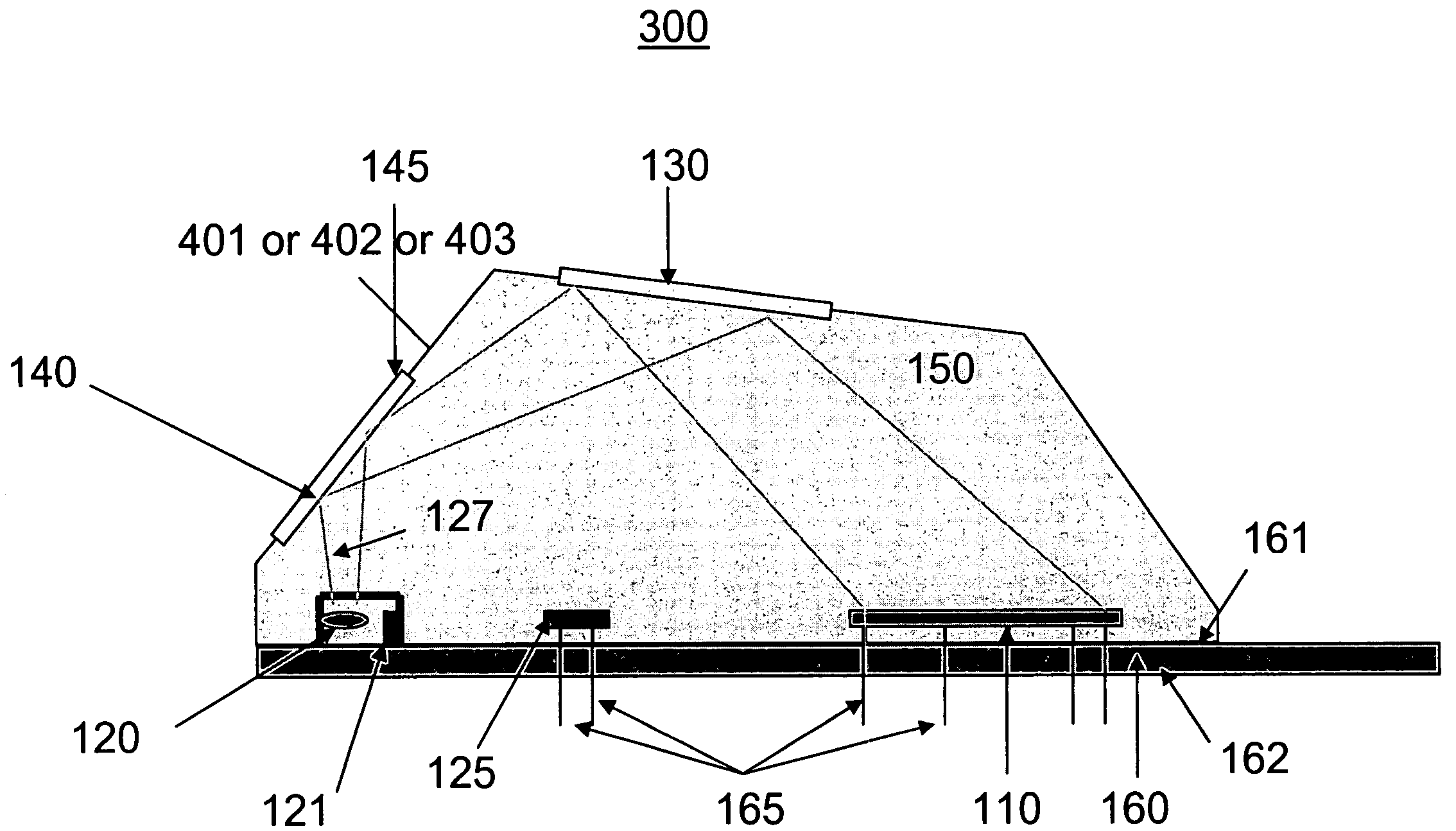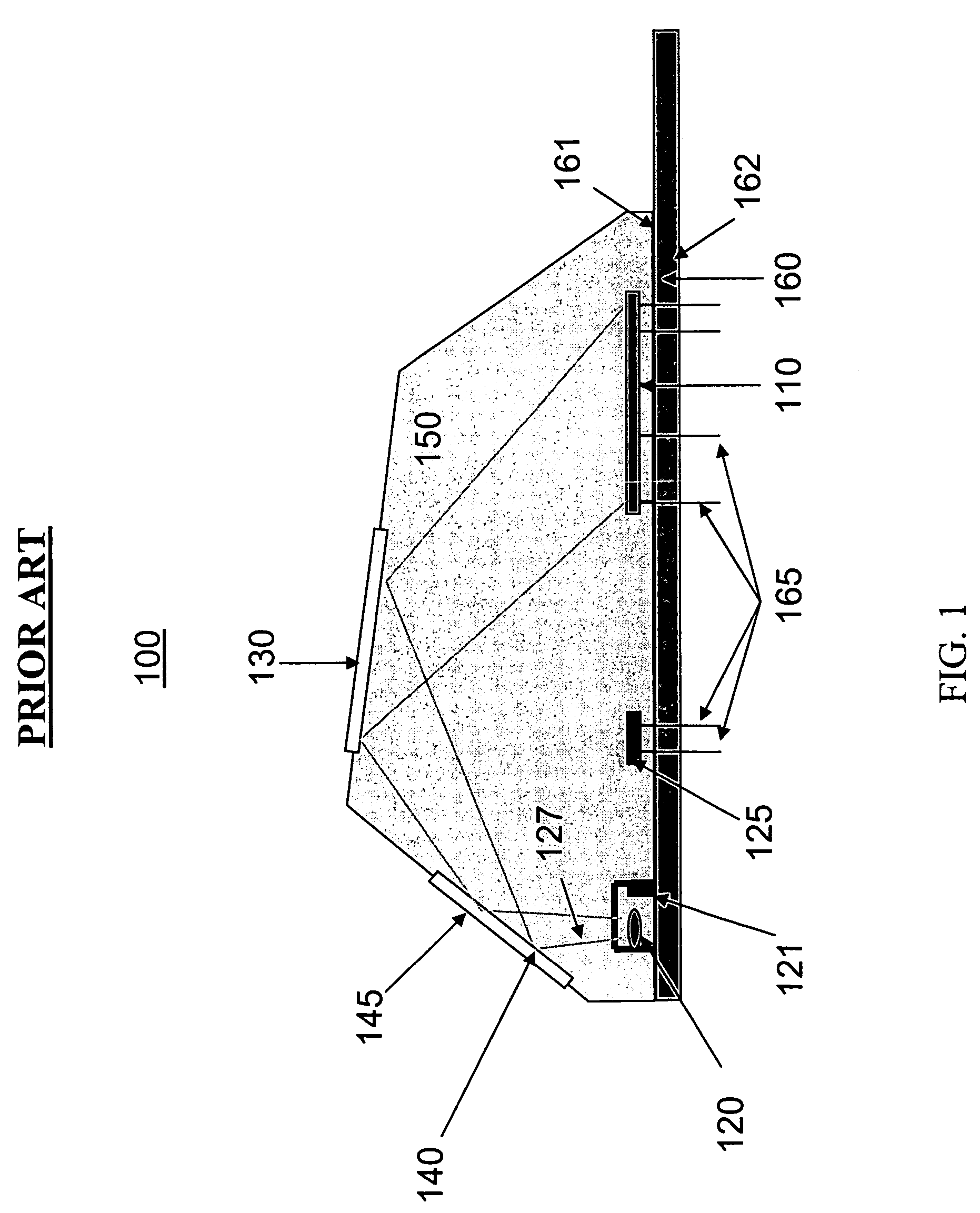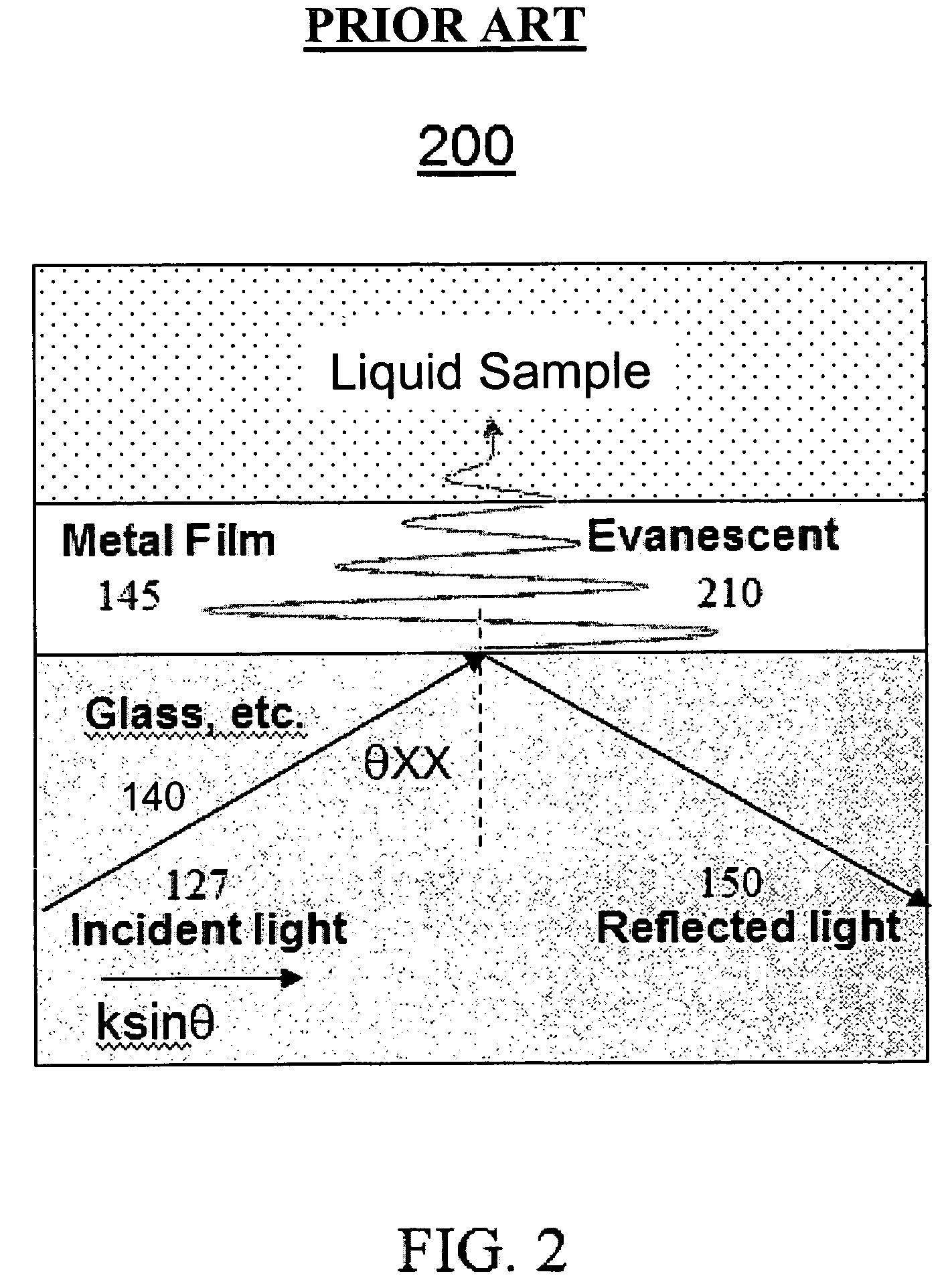Metal ion concentration analysis for liquids
a technology of metal ions and concentration analysis, applied in the field of analytical chemical instruments, can solve the problems of inability to accurately detect metal ions in liquids, change in the spr angle, and inability to direct detection of metal ions by a miniaturized device, etc., and achieve the effect of metal ion concentration, convenient integration into many applications, and cost-effectiveness
- Summary
- Abstract
- Description
- Claims
- Application Information
AI Technical Summary
Benefits of technology
Problems solved by technology
Method used
Image
Examples
second embodiment
[0052]Referring to FIG. 4b according to the present invention, the SAM material is replaced by an electric hydrogel 402 material. A hydrogel 402 is a polymeric material that swells when exposed to water. By controlling a hydrogel's chemical makeup, the degree of swelling can be made sensitive to environmental conditions such as temperature, pH, and analyte (a substance undergoing analysis) concentration. A change in volume of the hydrogel can be measured in a variety of physical and optical ways and thus provides the basic element of a sensor. Metal ions 450 can bond to the hydrogel 402 surface, or internally throughout the hydrogel 402. Metal ion bonding to the hydrogel can be covalent, electrostatic or geometrical / spatial.
[0053]Hydrogel 402 materials can adsorb metal ions 450 from liquids with high specificity. Hydrogels 402 are mesoscopic (between 2 and 3 dimensions) materials that a) can be chosen to only attract specific metal ions 450 of interest, b) have high selectivity and ...
third embodiment
[0054]Referring to FIG. 4c according to the present invention, a SAM has a plurality of metal ion head group / binding sites 403a. This material may be referred to as a SAM+.
[0055]The SAM 401, hydrogel materials 402, and SAM+403 materials are engineered / selected for high-selectivity of metal ions in liquids. Bonding of the metal ion 450 to the SAM 401, hydrogel 402, and SAM+403 materials may occur via the following mechanisms; physisorption (van der Waals, Coulombic, electrostatic interactions), chemisorption (chemical bond), and geometrical or spatial bonding, depending on the material.
[0056]SAM+403 and hydrogel 402 materials afford an increased number of metal ion binding sites as compared with SAM 401 materials. In this way, more metal ions can be adsorbed at a surface and therefore increase the sensitivity and dynamic range of the metal ion analysis sensor.
[0057]In various embodiments of the present invention the SAM 401, hydrogel 402 and SAM+403 materials are chosen to: 1) select...
PUM
| Property | Measurement | Unit |
|---|---|---|
| concentration | aaaaa | aaaaa |
| index of refraction | aaaaa | aaaaa |
| pyramidal shape | aaaaa | aaaaa |
Abstract
Description
Claims
Application Information
 Login to View More
Login to View More - R&D
- Intellectual Property
- Life Sciences
- Materials
- Tech Scout
- Unparalleled Data Quality
- Higher Quality Content
- 60% Fewer Hallucinations
Browse by: Latest US Patents, China's latest patents, Technical Efficacy Thesaurus, Application Domain, Technology Topic, Popular Technical Reports.
© 2025 PatSnap. All rights reserved.Legal|Privacy policy|Modern Slavery Act Transparency Statement|Sitemap|About US| Contact US: help@patsnap.com



